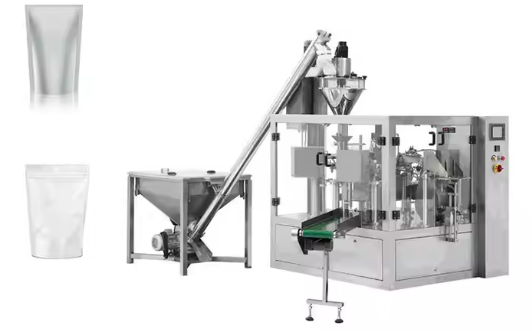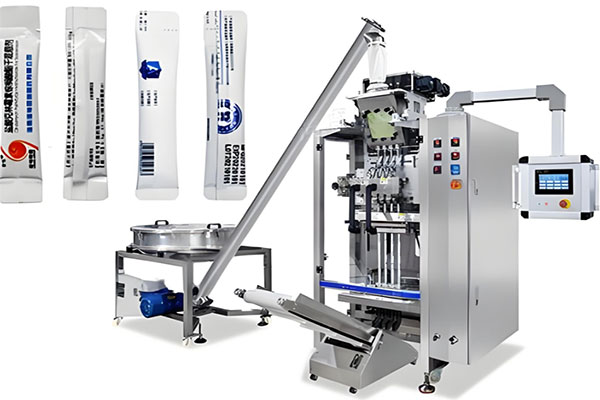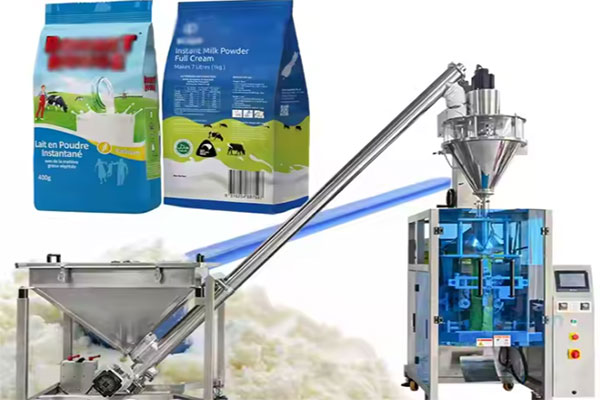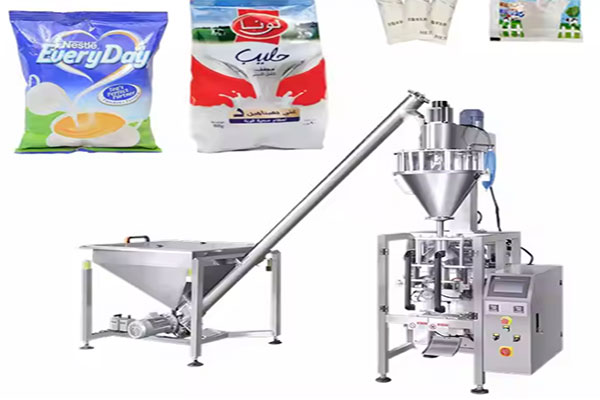Powder Packaging Machine Process Flow
Saturday September-13 2025 17:56:37
Powder Packaging Machine Process Flow encompasses automated metering, bagging, filling, sealing, slitting, and finished product delivery. This effectively improves packaging efficiency, reduces manual errors, and ensures the tightness and hygienic nature of the packaging. The equipment utilizes a microcomputer or PLC control system for high-precision control, supporting various packaging formats such as three-side seals and back seals. It is suitable for powder materials with varying flow properties, such as milk powder, pharmaceutical powders, dye powders, and graphite powder. The packaging capacity range is extremely wide, ranging from a few grams, such as for precious pharmaceutical powders and high-precision laboratory dye powders, to several kilograms, such as for large milk powder packages and industrial graphite powder packages, and can be customized to meet specific needs. Furthermore, modern powder packaging machines feature dust removal and anti-static features, making them suitable for materials prone to dust and moisture absorption, enhancing the safety and cleanliness of the production environment.
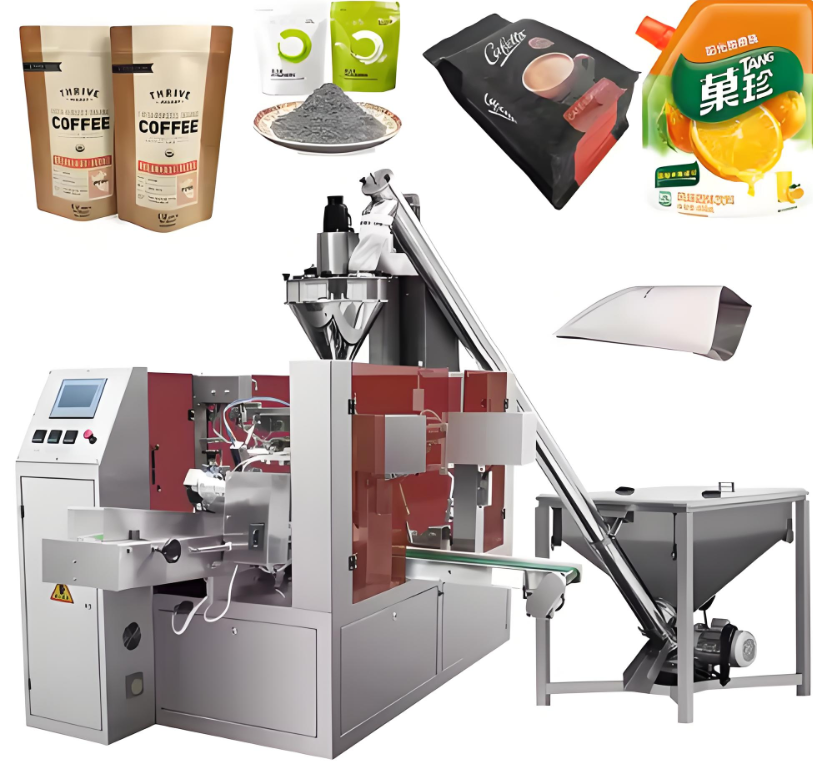
How Does Powder Packaging Machine Work?
The Powder Packaging Machine Process Flow is inseparable from the coordinated work of the various structural components of the Powder Packaging Machine.The following is an introduction to each structural system: The feeding system, including a storage hopper, a feeding screw, or a vibrating feeder, ensures uniform and stable material delivery to the metering unit. The metering system uses volumetric or gravimetric methods (such as electronic scales) to ensure the weight accuracy of each bag. The bag-forming mechanism automatically forms film rolls into bags. Common types include vertical bag-forming and back-seal bag-forming. The filling and sealing device precisely fills the powder into the bags and seals them using heat or ultrasonic sealing technology. The control system, equipped with a PLC or touchscreen interface, allows for adjustment of parameters such as packaging speed, fill volume, and temperature. Furthermore, auxiliary equipment such as dust removal, coding machines, and weight detectors further enhance packaging quality.
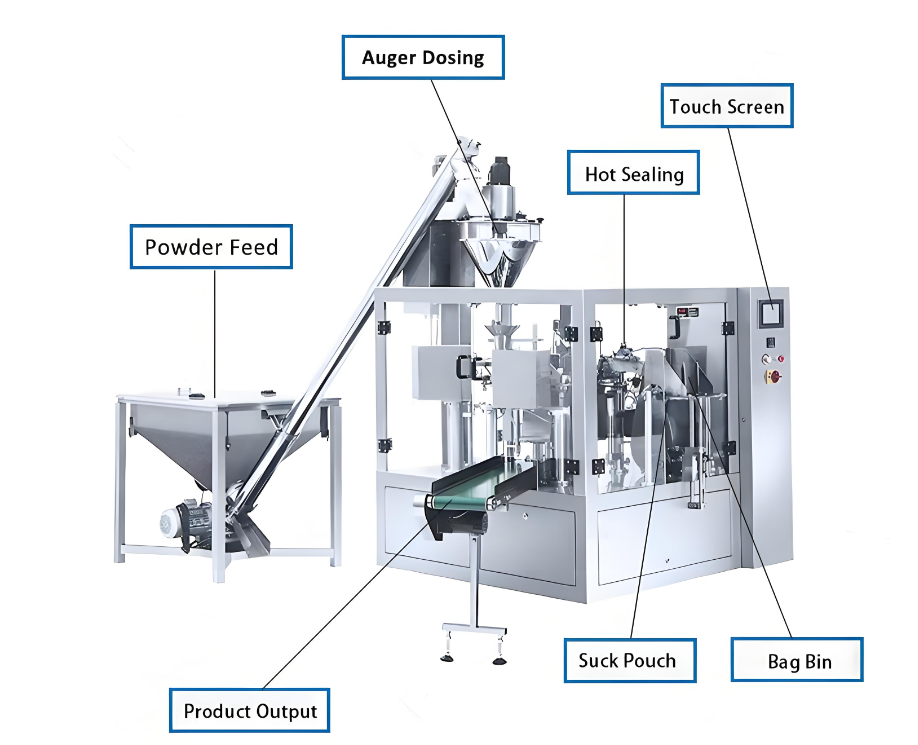
Powder Packaging Machine Process Flow
The powder packaging machine process flow completes packaging through the following steps: unscrambling, feeding, augmenter dosing, filling, checking, capping, bag closing, labeling, induction sealing, sleeve filling, and final packaging. First, the scattered bottles are sorted, followed by feeding, conveying the product to the appropriate location. Then, the screw feeding method precisely controls the product filling amount for filling. After filling, the capping operation is performed. Furthermore, bag sealing, labeling, induction sealing, and sleeve labeling are performed, ultimately completing the final packaging of the product. The following is an explanation of three important powder packaging machine process flows.

Powder Metering:A drive provides power, rotating a flexible spiral blade within a flexible spiral conveyor tube. Material enters the conveyor tube from a feed hopper. As the spiral blade rotates, the material is conveyed along the curved conveyor tube to a receiving hopper at the other end. This conveyor's flexible design makes it suitable for applications with limited space or angled conveying. Its shaftless design reduces the risk of material blockage and is particularly suitable for entangled or irregular particles.
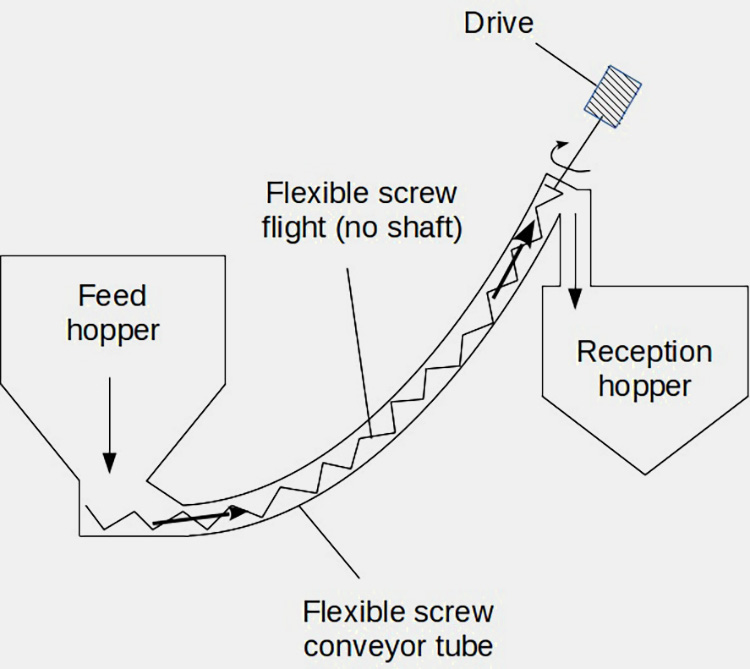
Powder Filling:The core principle of powder filling is to control the powder output per unit time through the rotation of the screw, achieving high-precision filling. The powder feeding system uses a vacuum conveyor, which uses negative pressure to transfer powder from the storage silo to the filler's hopper. A powder level sensor monitors the powder level in the hopper in real time, enabling automatic refill control. A rotator motor drives the agitator or screw to prevent powder blockage or bridging. In the core filling structure, the propeller maintains uniform powder flow within the hopper, preventing agglomeration and ensuring filling accuracy. The augmenter achieves quantitative filling through precise rotation, and the funnel accurately transfers the measured powder into the packaging bag.
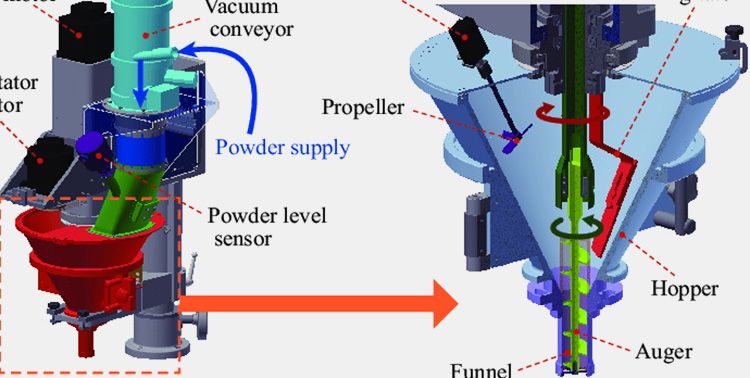
Bag Cutting:Bag cutting encompasses the entire automated process, from film roll unwinding, forming, sealing, filling, to finished product delivery. The film roll is unwound in the material unwind area, cut to size, and folded lengthwise to form the initial bag. The bottom seal and side seal are then heat-sealed to form a tubular bag, which is then cut into individual units by the cutting operation. In the filling station, the product is precisely filled into bags through a hopper, sealed with a top seal, and finally discharged by the filled pouch discharge.

Powder Packaging Machine Selection Guide
The characteristics of different powders (such as flowability, particle size, and electrostatic adsorption) have a significant impact on the selection of packaging machines. Production scale also determines the choice of machine. Small batches are suitable for semi-automatic machines, while large-scale production lines require fully automatic, high-speed equipment with integrated coding and weight detection functions. The following are selection guides for several common powders:
For powders with good fluidity, such as milk powder and coffee powder, spiral filling and packaging machines are suitable for accurate metering and high-speed packaging. Fine powders that easily generate dust, such as flour and graphite powder, require a closed filling system equipped with a dust removal device to prevent dust overflow. Powders that easily absorb moisture, such as certain chemical raw materials, can be packaged in moisture-proof materials and equipped with a nitrogen exchange system to extend the shelf life of the product. For pharmaceutical powders with higher precision requirements, it is recommended to use a weighing packaging machine such as an electronic scale to control the error within ±0.1 gram. If the material is a sticky powder such as protein powder or certain additives, it is recommended to use a vibration-assisted unloading or forced feeding system to avoid clogging problems.

The powder packaging machine process flow encompasses the entire process from material supply to finished product output. Choosing the right packaging machine for each powder's characteristics is crucial. Powders with poor flowability require a vibration device or stirring system; dust-prone materials require a fully enclosed design; and high-precision industries (such as pharmaceuticals) require micro-metering screws or dynamic weighing technology. As technology advances, powder packaging machines will further enhance their automation and adaptability, providing businesses with more efficient packaging solutions.
The application of Powder Packaging Machine is inseparable from the Powder Packaging Machine Process Flow. It is precisely because of the refined manufacturing of the equipment and the strict operation process that the equipment is applicable to a wide range of powder types and operates stably.
